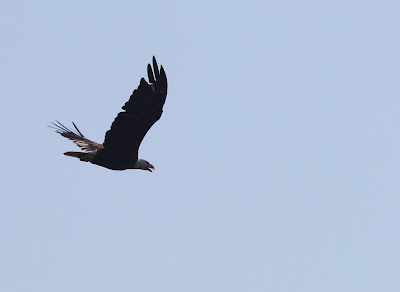Ask a 5th Grade student (and many adults) and they will say that a food chain is "when an animal eats a plant and then is eaten by another animal".
There is so much more to the story!
A food chain is a path that energy (and other nutrients) takes as it is transferred from one organism to another.
The energy in most food chains begins with the sun. Most plants and some bacteria use the energy from sunlight to convert carbon dioxide and water into simple sugars. This process is known as photosynthesis. These photosynthetic plants and bacteria are also known as producers, because they are capable of producing their own energy in the form of sugar. These organisms use this energy as fuel to live, grow, and reproduce.
 |
| Producers gonna produce... |
Not every organism can produce its own energy through the process of photosynthesis. Instead, some organism meet their energy needs by eating other organisms or parts of organisms. We call these organisms consumers, because they have to consume other organisms to attain energy.
Some consumers survive on a diet that is made up entirely of plants. They are known as herbivores. Other consumers eat a diet consisting only of animals and are called carnivores. A third group of consumers eat both plants and animals. Members of this group are called omnivores.
Just to make things confusing, consumers can also be referred to by different levels. A primary consumer is any animal that is consuming a plant or part of a plant (fruit, seeds, leaves, etc.). A good example of a primary consumer is the Cottontail Rabbit.
 |
| Cottontail Rabbit - busy being a primary consumer |
Any animal that eats a primary consumer is known as a secondary consumer. So if our Cottontail Rabbit was caught and eaten by a Red-tailed Hawk, the hawk would be a secondary consumer.
 |
| Small primary consumers beware - this hawk wants to be your secondary consumer... |
Sometimes secondary consumers end up being killed and eaten. An animal that does this is known as a tertiary consumer. A food chain could potentially have an animal that eats a tertiary consumer - this consumer would be called a quaternary consumer.
Eventually a food chain will reach a point where there is consumer that doesn't get killed and eaten by anything else. This would be called an apex consumer - apex means the summit, peak, or highest point of something, such as the apex of a mountain.
If we added a Bald Eagle to our food chain above - eagles sometimes kill and eat hawks - the eagle would be a tertiary consumer and the apex consumer in this food chain.
 |
| Make way! Apex consumer coming through! |
 |
| Northern Raccoon - I fit on many levels of many food chains |
Even apex consumers don't live forever, eventually they will either live out their life span or die of other natural or unnatural causes. When this happens, two groups that fall outside the normal food chain parameters. Some animals specialize in eating carrion (dead animals) or add carrion to their normal diet when it becomes available. Animals that do this are known as scavengers. American Crows are a good example of a scavenger. While they are perfectly happy eating grains, insects, nuts, bird eggs, etc., here in Mid-Michigan they spend much of their time cleaning up the remains of road-killed animals.
 |
| A crow scavenges for food along the flooded Chippewa River (April 2014) |
What scavengers don't eat eventually gets broken down and returned to the soils by fungi and bacteria. The organisms that do this are known as decomposers.
 |
| Gem-studded Puffballs decompose leaves and other organic matter |
Some decomposers specialize in certain things like dead trees or fallen leaves, other decomposers are generalists and break down a wide range of organic materials. Without decomposers, our soils would be quickly depleted as nutrients are taken up by producers (and then the various levels of consumers) - decomposers help free these trapped nutrients and return them to the soil where they can be used again.
 |
| Everything edible has been scavenged from this deer carcass - now decomposers will take over and break it down completely |
No comments:
Post a Comment